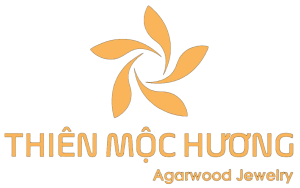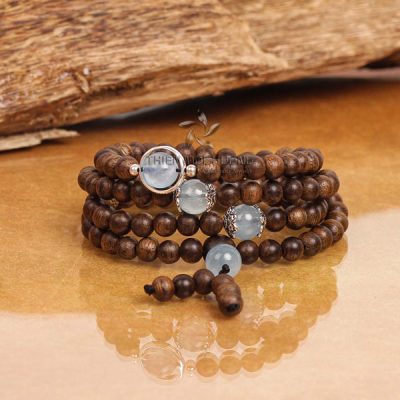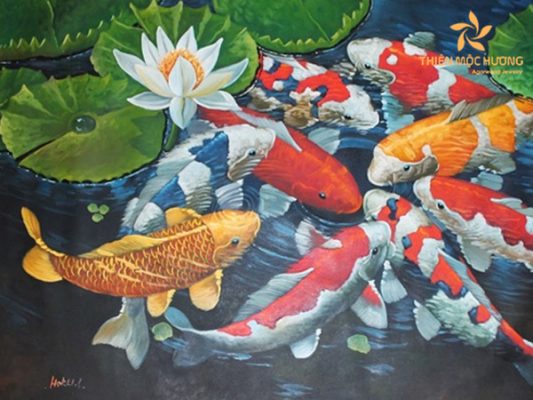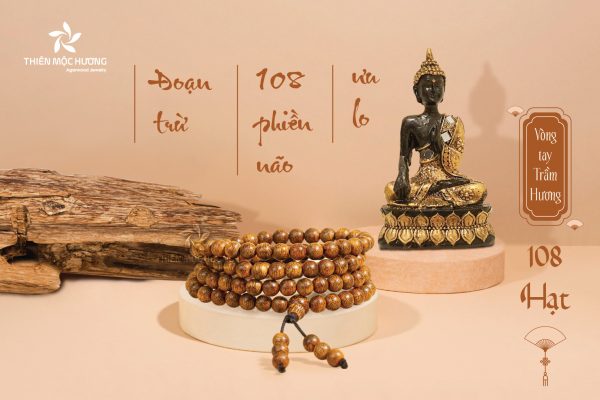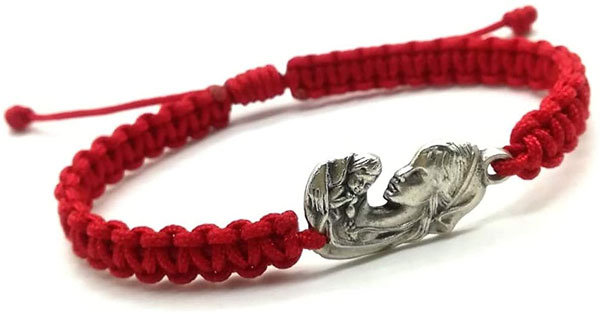The use of waist beads as adornment has grown in popularity in recent years. Celebrities such as Beyoncé, Kylie Jenner, and Bella Hadid have all worn various variations of them, making them more popular among young people. These beads are not only plentiful and varied in colour and size, but they also have a variety of other uses and meanings. So, what are the functions and significance of these special beads? Let’s find out together in the following article with Thien Moc Huong immediately.
I. What are waist beads?
Africa is home to some of the world’s most diverse, vibrant, and ancient cultures. Africa’s rich culture and customs often pique the interest of many people who wish to learn more about it. Because the beads are a classic African adornment, they are often referred to as African waist beads. Glass beads are frequently strung together and worn around the waist. Wearing them has distinct implications in each country and culture in Africa.
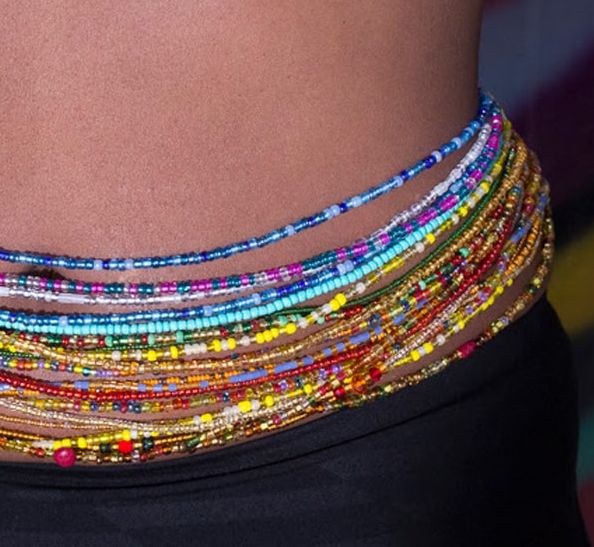
II. African waist beads meaning
For generations, black women in several African countries wore beads for the waist. These things are derived from African areas, rituals, and tribes. For thousands of years, African women have worn them as a symbol of femininity, spirituality, and riches in addition to being fashionable.
1. In Ghana’s culture
In addition, the meaning of enhancing femininity, traditional beads are used to mark a girl’s adulthood. As she came of age, several large beads were added, and with each step, the beads collided, creating a sound to notify the men of her availability.
2. In East African Culture
Waist are also popular in East African countries. East African women usually add a few essential oils to their beads as a cure, fertility booster, puberty or even class. Wearing beads for the waist is largely popular across East African countries as well; women can add essential oils to their bead strings in order to promote healing properties and utilize them in similar ways
3. In South African culture
The culture of wearing these beads also influenced some South African countries and spread to the Caribbean. The southern regions of Africa also make unique use of beads for the waist in unique ways. Most notably, women in Zambia and Malawi use their beads during pregnancy or to seduce their husbands.
III. How to make waist beads – Step by step guide
Making your own waist beads can be a creative and empowering experience. Here is a step-by-step guide to crafting your unique waist beads:
- Step 1: Gather the materials: beads, thread, and a clasp.
- Step 2: Measure your waist and add extra length for tying.
- Step 3: Select the beads and arrange them in a pattern of your choice.
- Step 4: Thread the beads onto the string, ensuring a secure knot at the end.
- Step 5: Adjust the length and tie the ends together, creating a comfortable fit.
- Step 6: Admire your handmade waist beads and embrace their significance.
IV. Waist beads color meaning
The colors of beads for the waist are not just visually appealing; they also hold significant symbolism. Each color represents various aspects of life, emotions, and energy. Let’s explore the meanings behind different colors commonly used in waist beads.
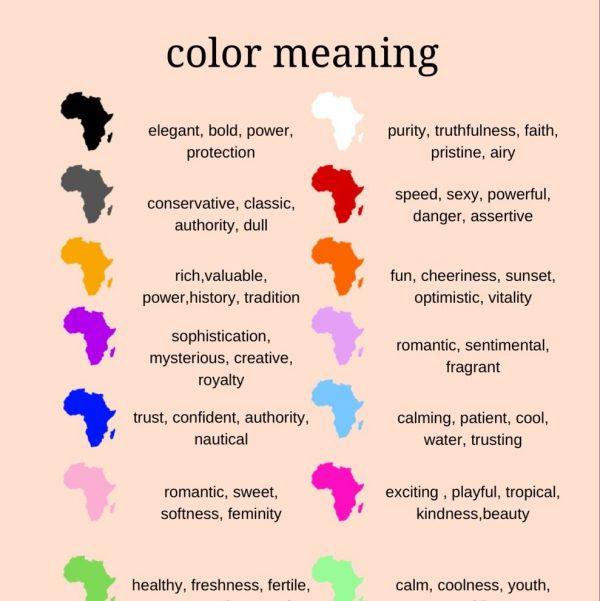
1. Red waist beads meaning
Red symbolizes passion, power, and vitality. It represents love, courage, and strength. It ignites passion within oneself and fosters self-confidence.
2. Yellow waist beads meaning
Yellow signifies joy, happiness, and optimism. It promotes positivity, clarity, and stimulates intellectual energy. Yellow waist beads evoke a sense of brightness and cheerfulness.
3. Blue waist beads meaning
Blue embodies calmness, tranquility, and spirituality. It represents loyalty, wisdom, and truth. Blue beads for the waist inspire inner peace and help in emotional healing.
4. Green waist beads meaning
Green symbolizes fertility, abundance, and growth. It is associated with prosperity, renewal, and harmony. Green waist beads invoke a connection to nature and its cycles.
5. Purple waist beads meaning
Purple represents royalty, spirituality, and higher consciousness. It symbolizes power, luxury, and creativity. Purple beads for the waist enhance spiritual awareness and encourage self-expression.
V. Benefits of waist beads – What are waist beads used for
1. Preserving cultural heritage
While some women wear traditional beads as an accessory, other women wear them because of their culture. In some countries where women are raised by wearing these beads, they grow up that way and pass it on to the next generation. Such communities often live in Nigeria, Sudan, and Ghana. Wearing beads for the waist is the most common way for black women in the community to connect with their ancestors, co-honouring their heritage and customs and cultures.
2. Weight control of waist beads
Normally, the beads will not stretch. When a woman gains weight, these beads will pick up the waist. In contrast, when she loses weight, they will become manageable and dropdown. Therefore, it is considered an excellent tool for assessing weight changes and play a role as a reminder for users to adjust body weight. However, any shape or size can choose the appropriate beads for the waist for the best experience with them.
3. Become maturity
During their first menstrual cycle, mothers in West African cultures wrap beads for the waist around their daughters’ waists to represent their daughters becoming ladies. In Ghana, babies wear that beads during their naming ceremony, but only girls wear them until they are old enough to wear them themselves. This usage is less common than it formerly was, but it is not obsolete. Only those who still adhere to the culture do so.
4. Used as jewellery
Beads for the waist have been an endless source of inspiration for jewellers, from the spiritual to the symbolic to the way making and the vivid culture. In recent years, many Western women have begun to use them as an accessory, enhancing their outfits and emphasizing their perfect waist.
5. Mental soothing and meditation
While modern women use waist beads as jewellery, some spiritual ladies also wear them for good luck. These people think that wearing those beads will offer them calm, luck, and a good night’s sleep. They also wear them when meditating since they believe the beads protect the heart, mind, body, and soul. As a result, they employ them to counteract unfavourable omens.
6. Sexual attraction
Many ladies all around the globe use the beads in intimate settings to increase their sexiness. When most guys see a lady wearing this, they become thrilled. As a result, one of the numerous reasons why ladies wear African waist beads, especially when they want to be intimate with their partners, is because of this. Because women wear them hidden under clothing, only the user and her partner can see, these beads are compared to a unique set of underwear in some cultures.
Conclusion
Waist beads are not merely decorative accessories. They hold deep meanings, reflecting cultural traditions, personal beliefs, and serving practical purposes. Whether you wear them for cultural identity, spiritual connection, or fashion expression, beads for the waist are a powerful symbol that celebrates femininity, spirituality, and self-expression. So, embrace the beauty and significance of beads for the waist and let them adorn your journey through life.
For more information about feng shui knowledge, or if you want to research about good luck bracelet, fengshui stone for health that can help your career become better in the future, you guys can now take a look at those link below:
(1344)
